From “Free Willy” to responsible whale watching: How whale industry in Iceland has changed
The Snæfellsnes peninsula's fjord at Ólafsvík is the killer whale hotspot in Iceland. Photo/Lisa Nowinski
While whaling in Iceland seems to be on the decline, whale-watching industry is booming. Is that good or bad for the animals?
Marie Mrusczok stands wide-legged on the swaying deck of the Íris, her gaze fully concentrated on the grey-blue shimmering sea. Her eyes are scanning the Breiðafjörður for fins, blows, or any other signs of whales. Up to 70 passengers place their hopes for a whale encounter on the spotter of the afternoon tour. Mrusczok is not alone. Her six-year-old Icelandic Sheepdog Sara is always by her side and has already proven her spotting skills, especially in foggy conditions.
Spotted: As soon as Marie Mrusczok has sighted a whale, she informs the crew and the captain. Photo/Lisa Nowinski
"We can sometimes detect the presence of Minke whales nearby by her sniffing. They stink, and you can tell by her reaction," Mrusczok says with a laugh. The 35-year-old whale-enthusiast is a walking whale encyclopaedia, specialising in Orcas. The Snæfellsnes peninsula's fjord at Ólafsvík is the killer whale hotspot in Iceland, where they feed on a plentiful buffet of herring between February and early July, providing the opportunity for fans to reminisce about Free Willy.
The Orca expert from the West recognises 600 Orcas by sight
Mrusczok is passionate about Orcas and has catalogued over 1,000 individuals systematically since joining Láki Tours' team in 2014. She recognises more than 600 individuals by sight based on the shape and scarring of their dorsal fins and backs. Each one has a number, and most have names. She wants to document their travel routes and social behaviour as precisely as possible to contribute to the protection of the animals, whose conservation status cannot be determined by the IUCN Red List due to a lack of data.
"Perhaps there are far fewer in the North Atlantic than we think, and stronger protective measures should be implemented," says Mrusczok, explaining her motivation for founding the Orca Guardians Iceland initiative.
Since joining Láki Tours as a guide in 2014, she has systematically documented all her sightings. She took 75,000 photos alone last year, allowing her to track Orca family trees through three generations via her non-invasive photo-ID work. This, along with her work for the West Iceland Nature Research Centre (Náttúrustofa Vesturlands), makes her a top expert on orcas in Iceland.
Tourism funds the research on Whales
Only tourists make it possible. On this afternoon in April, they are lucky: Diving sperm whales, circling Orcas, and jumping humpback whales make it to camera rolls and become unforgettable memories. Even the crew is surprised by the show of the humpback whales.
Without people from all over the world willing to pay for these whale encounters, Gísli Ólafsson's former fishery would not have evolved into a whale-watching company, and Mrusczok would not have this exceptional opportunity to conduct her research daily.
Sara is a very well-trained dog and even a trick dog champion. Her next learning assignment is not to bark when a humpback whale breaches. Photo/Lisa Nowinski
Recently, she and her team were able to provide evidence through images of an Orca female accompanied by a pilot whale calf. They also observed how Orcas, who have no natural enemies, were chased away by pilot whales.
The question now remains whether childless Orcas occasionally steal pilot whale calves, thus provoking the pilot whales. For Mrusczok, the daily tours are always about a small puzzle piece in the behaviour of her favourite animals. And even some tourists get so excited that they adopt one of the giants from the catalogue at the end of the tour via the Orca Guardians adoption program.
Increasing competition among whale watching companies in Iceland
However, the bigger the rush to Iceland, the bigger the rush to the whales. 360,000 tourists booked a whale-watching tour last year. It seems to be only a matter of time before the demand exceeds the numbers of the previous record year in 2019 before the pandemic.
Two new whale watching companies opened for the 2023 season, making a total of 14 across the country. With the competition increasing, the pressure is on to offer the most unforgettable experience for clients. The closer, the better. This may apply to souvenir photos, but not to the well-being of the animals.
Lucky day for the tourists on board the Íris: It doesn't happen too often that they get to see many humpback whale breaches like this. Photo/Lisa Nowinski
That's why the Icelandic Whale Watching Association "Ice Whale" developed a code of conduct for responsible whale watching in 2015. It includes speed limits, approach angles, and time limits for boats near the animals to help maintain the balance between human curiosity and the whales' need for privacy.
All providers of regular tours in Iceland now commit to following these guidelines, and they are trained once a year. However, compliance with the guidelines is not monitored during each tour, and only three of the companies pursue both economic and research interests.
Why whale watching companies lobby against whaling
Rannveig Grétarsdottir, Chairwoman of Ice Whale and CEO of Elding, the first company in Reykjavík to offer whale watching tours, believes that most providers adhere to the self-imposed rules. “We won’t be able to continue our business, if we don’t behave”, she says.
Ice Whale also lobbies against whaling, as Grétarsdottir notes a difference in whale behaviour when minke whaling was still going on. “They were shyer back then”, she says. The hunt for minke whales stopped in 2020, and only one company specializing in fin whales is currently active.
The Icelandic Sheepdog Sara likes to take a nap in a lifebelt during the whitewashing tours. Photo/Lisa Nowinski
However, the hunt takes place in areas that do not overlap with those of the whale watching companies. “Still, we hope that whaling will stop for good”, says Rannveig Grétarsdottir. Apparently, it’s not going to happen this year though. “We can already see the boats in the dry deck.”
The practice of whaling is increasingly criticized by the public in Iceland, and in 2022, only 33.2% supported the hunting of fin whales, down from 56.9% in 2013. 64.3% of Icelanders also fear that whaling makes their country look bad internationally. Grétarsdóttir also believes that "It does not fit Iceland's image of being a friendly, environmentally conscious country."
Attempt to reduce the tourist’s demand for whale meat
The current quotas will expire at the end of the year, and it is unclear whether new quotas will be established in 2024. Fisheries Minister Svandís Svavarsdóttir has announced that the government will assess the potential economic and social impact of whaling.
Marie Mrusczok has catalogued over 1,000 individuals systematically by using photo-id. Photo/Lisa Nowinski
As the crews on board the whale watching tours continue to sensitize tourists, they explain that whale meat is not a traditional Icelandic dish that one must try. In fact, 84% of Icelanders never eat whale meat. Most of the catch is exported to Japan and consumed there. Just before the boat docks, a request is made over the speakers: "If you want to help us protect the whales, do not go to restaurants that offer whale meat."
Even on the spotter's platform of Iris, it's now quitting time. Marie Mrusczok takes her camera and dog, slips out of her all-weather suit, and goes ashore. She cannot yet say what will be the next step in her work with the orcas. "I just knew as a child that I wanted to work with them. Then I also wanted to help them. And now I want to study them as thoroughly as possible," she says. The next opportunity presents itself the next morning at 10 o'clock. Then new tourists are waiting for the next tour.


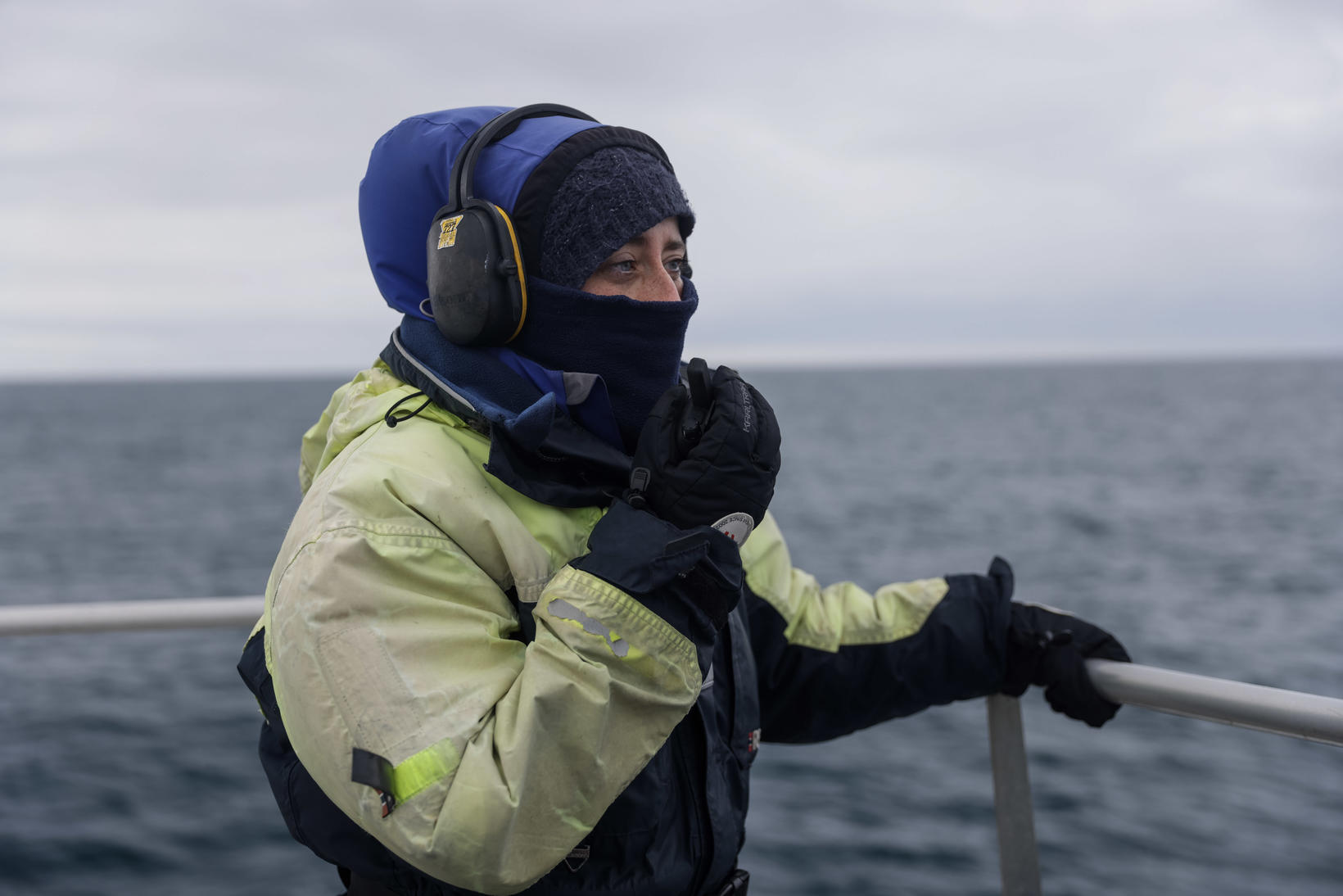

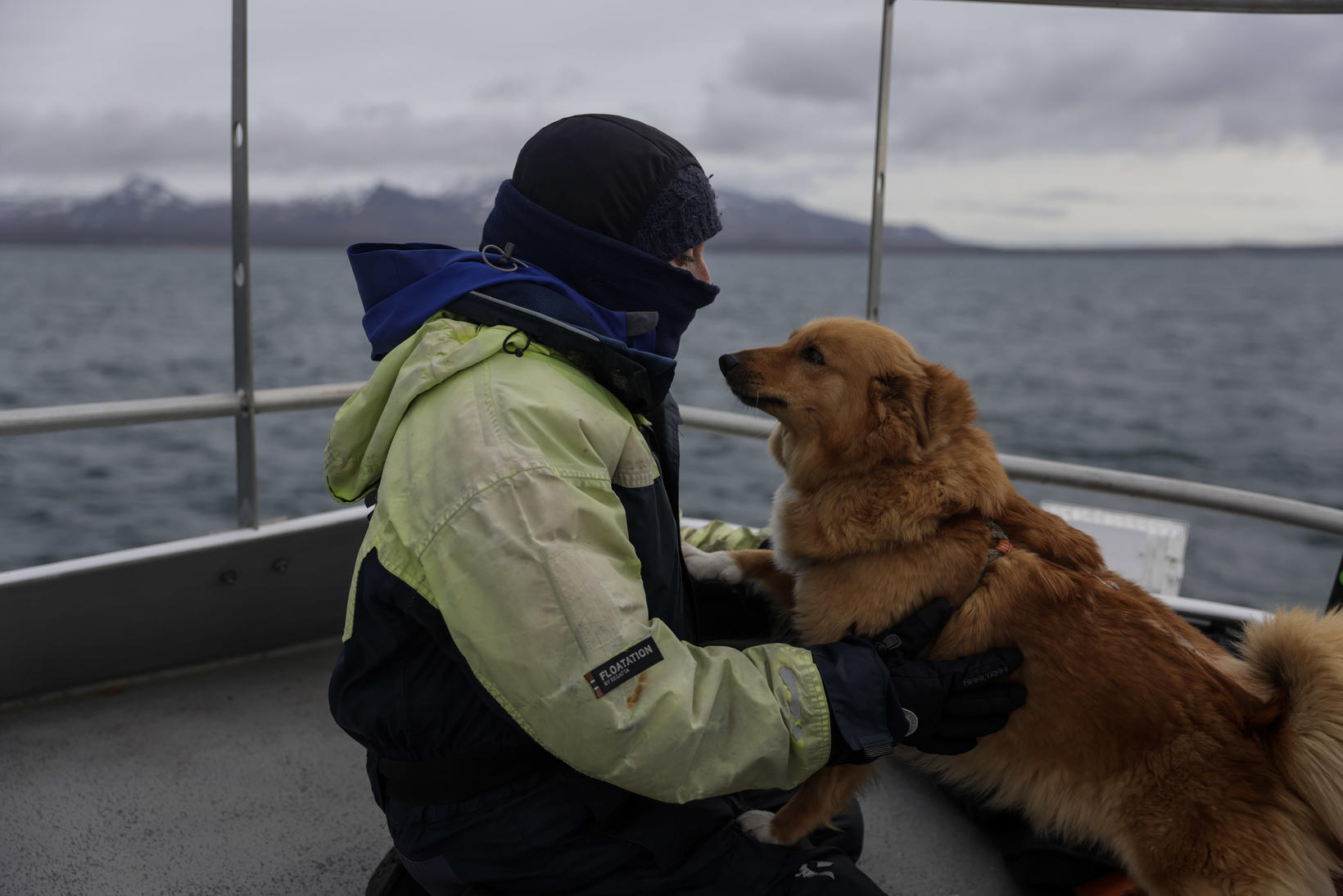
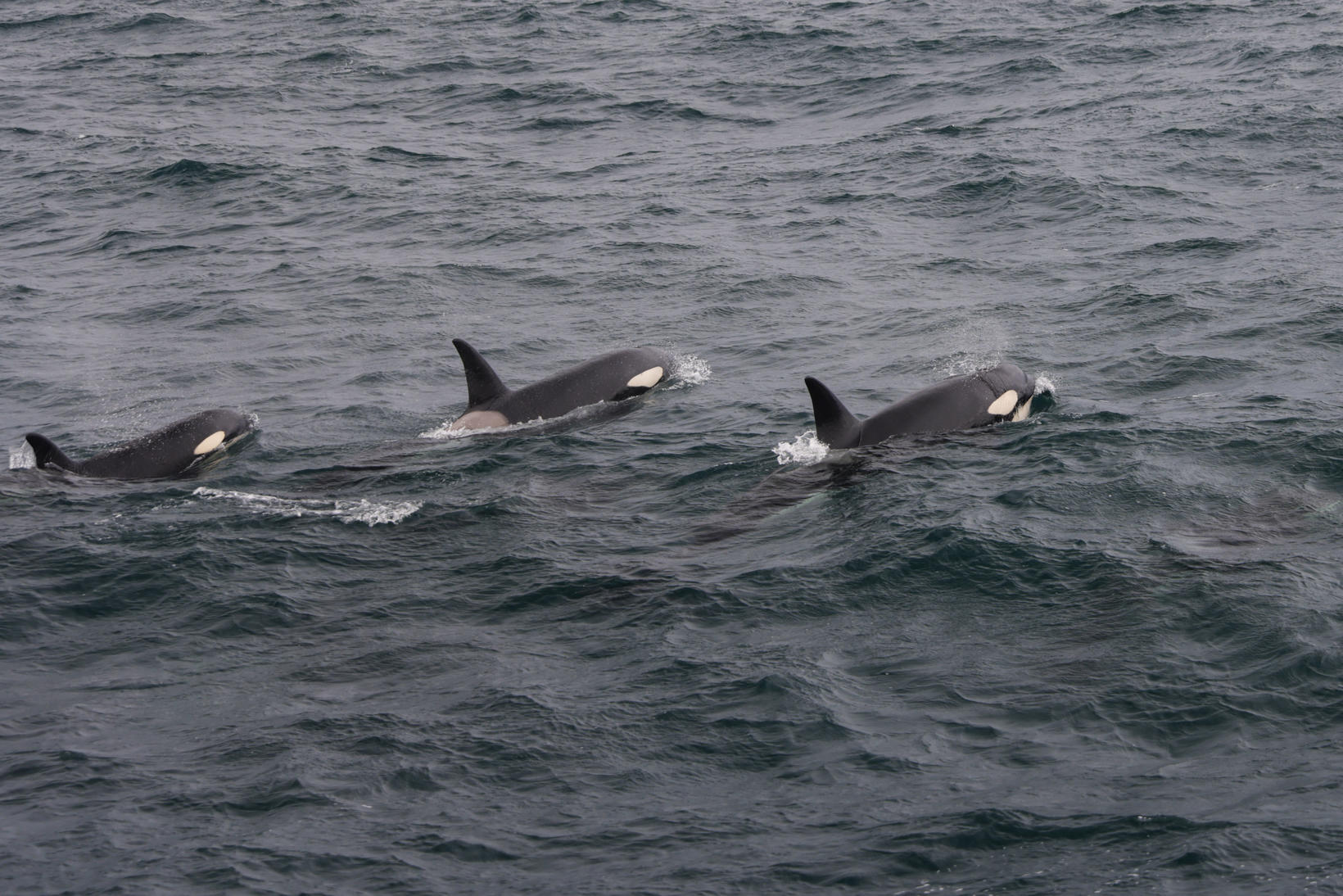
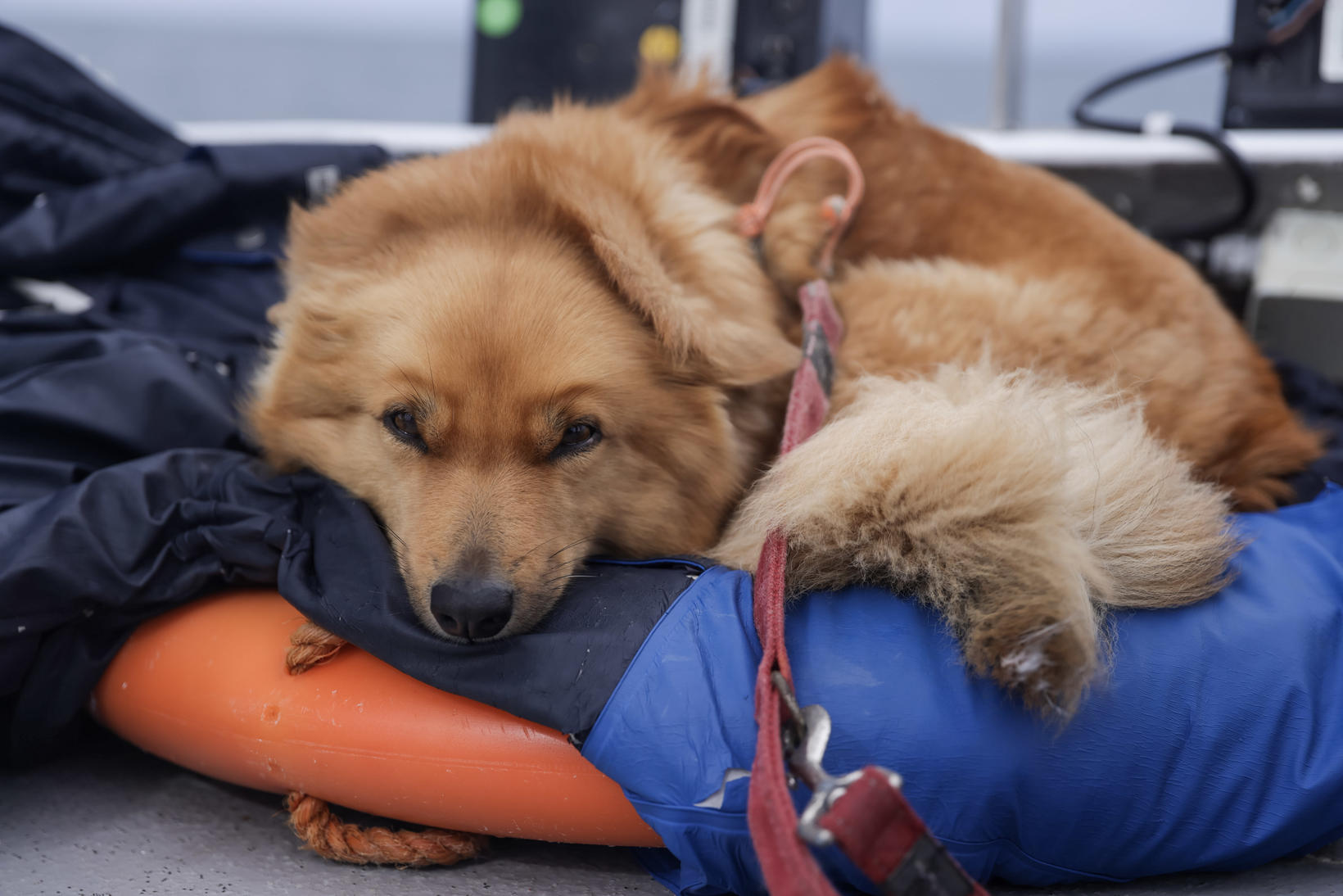
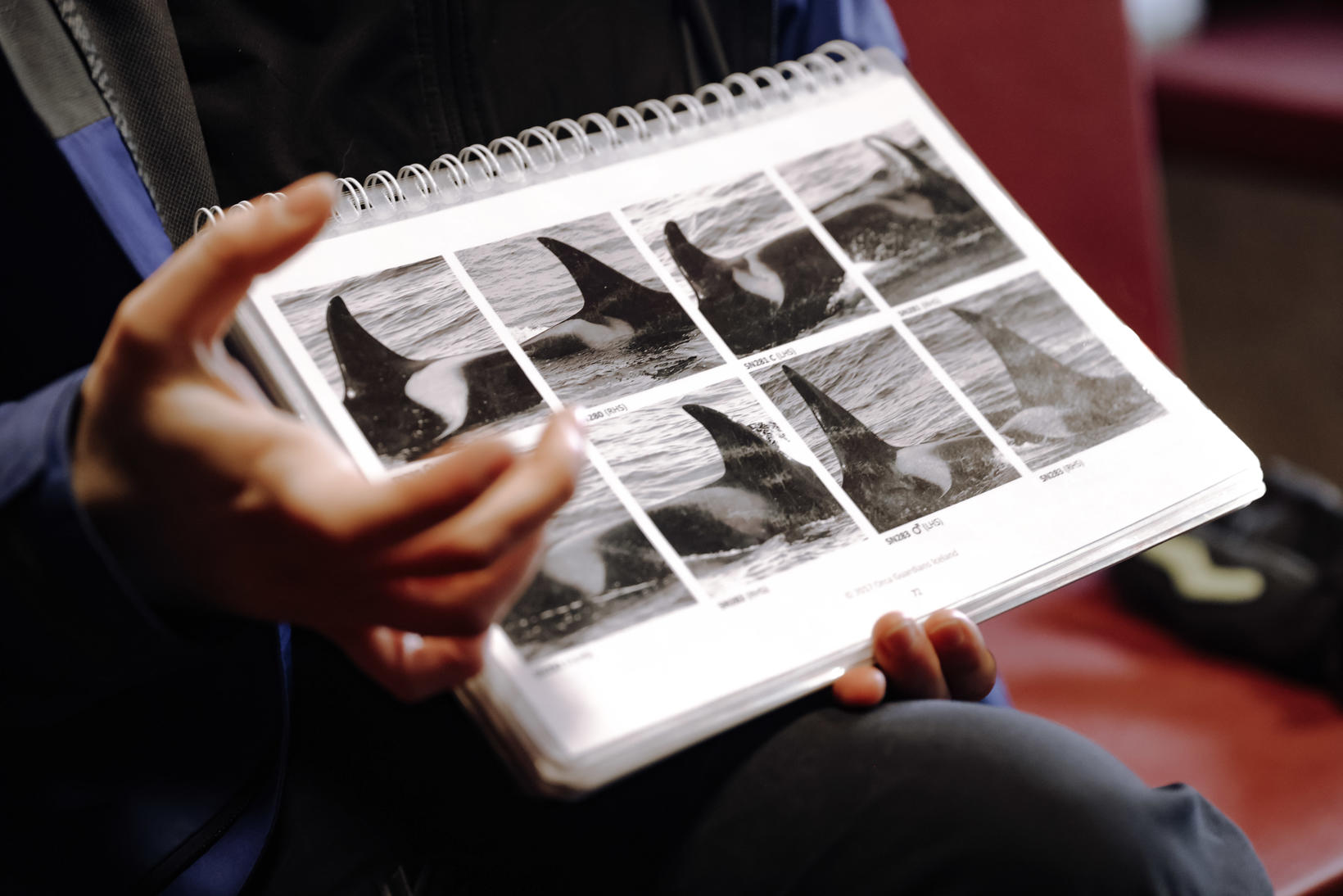
/frimg/1/57/87/1578747.jpg)





